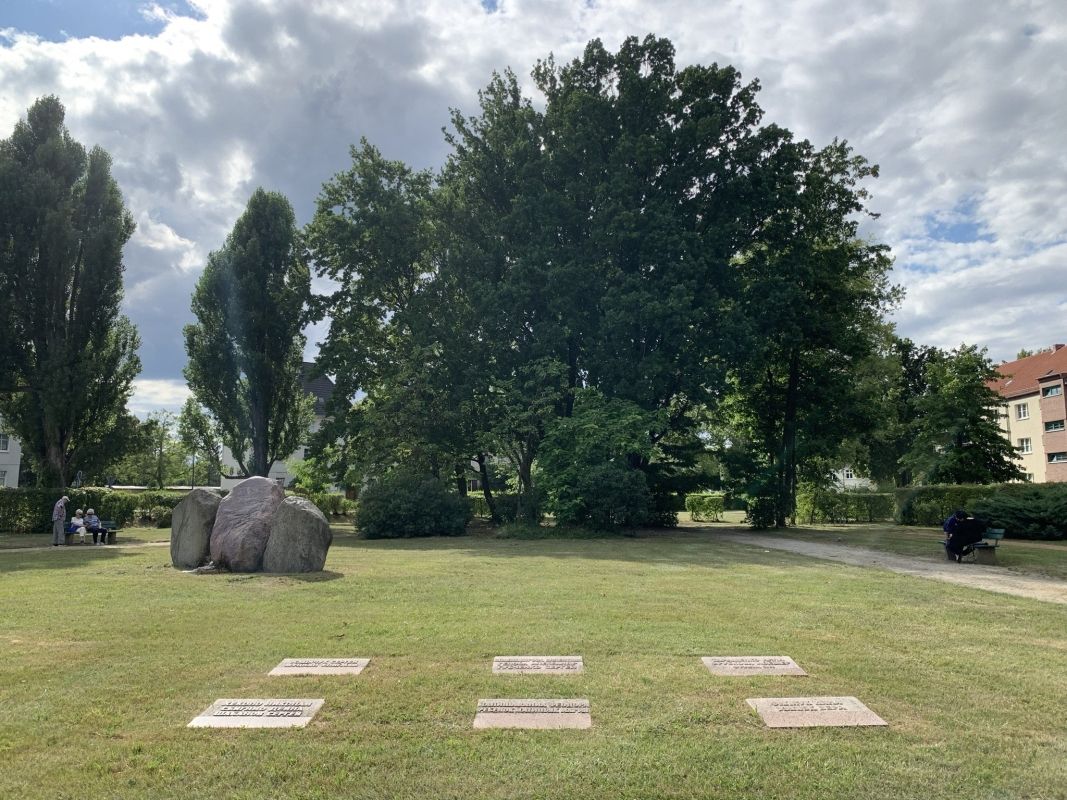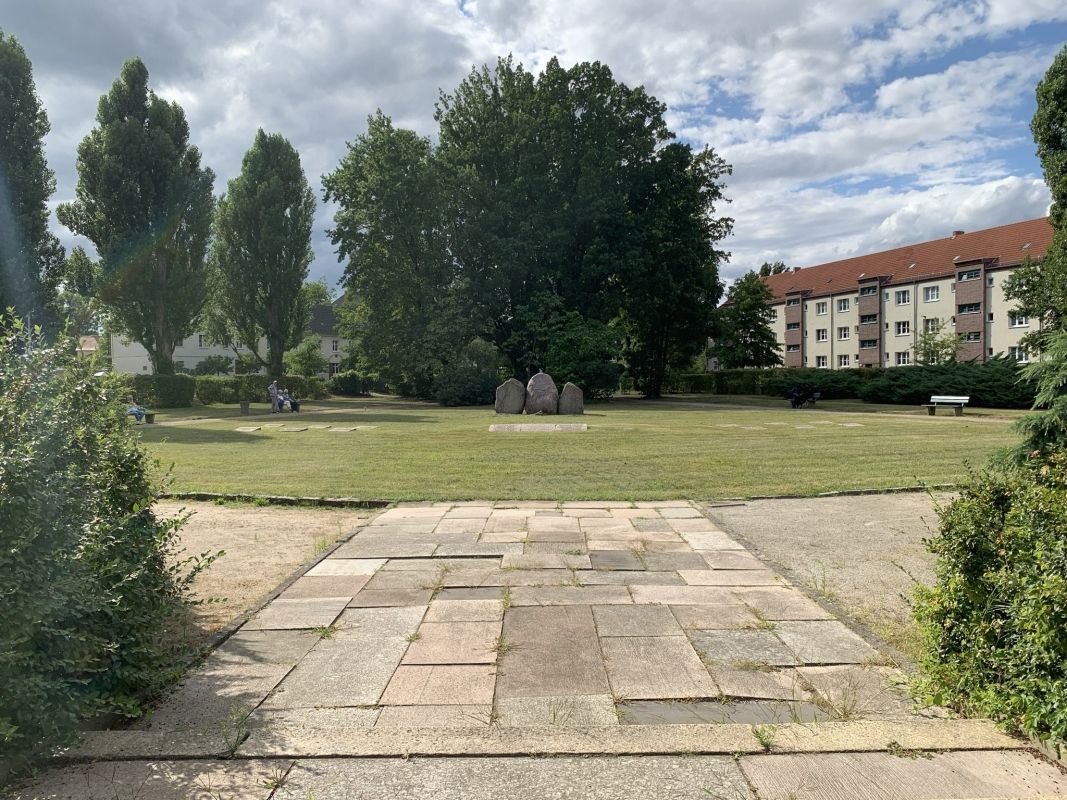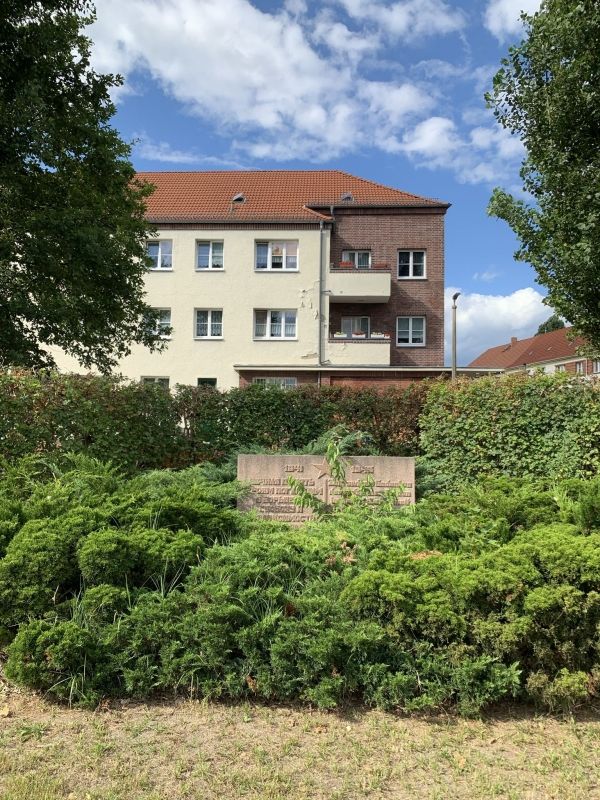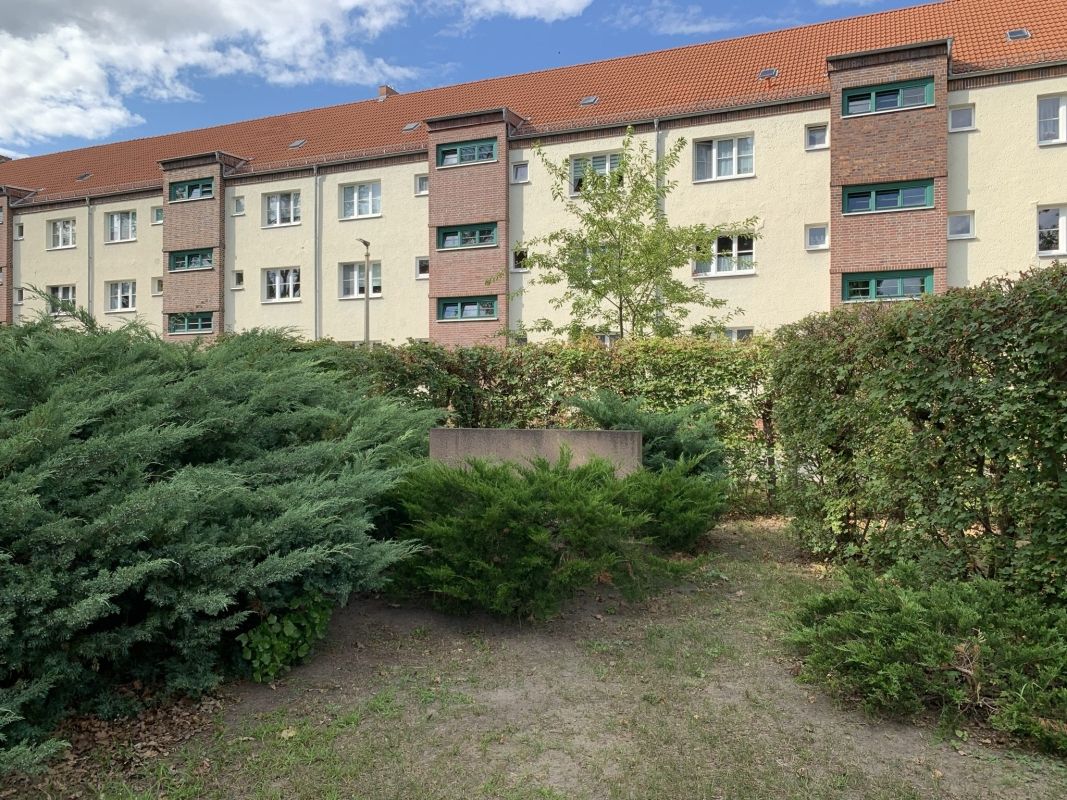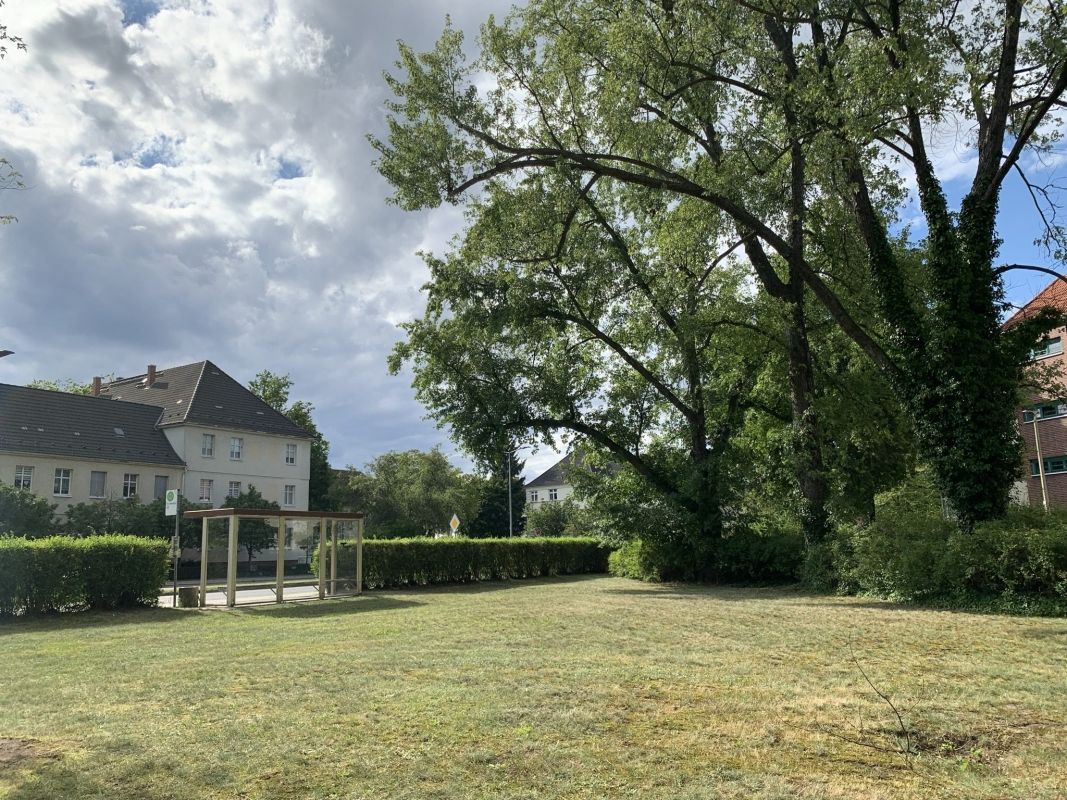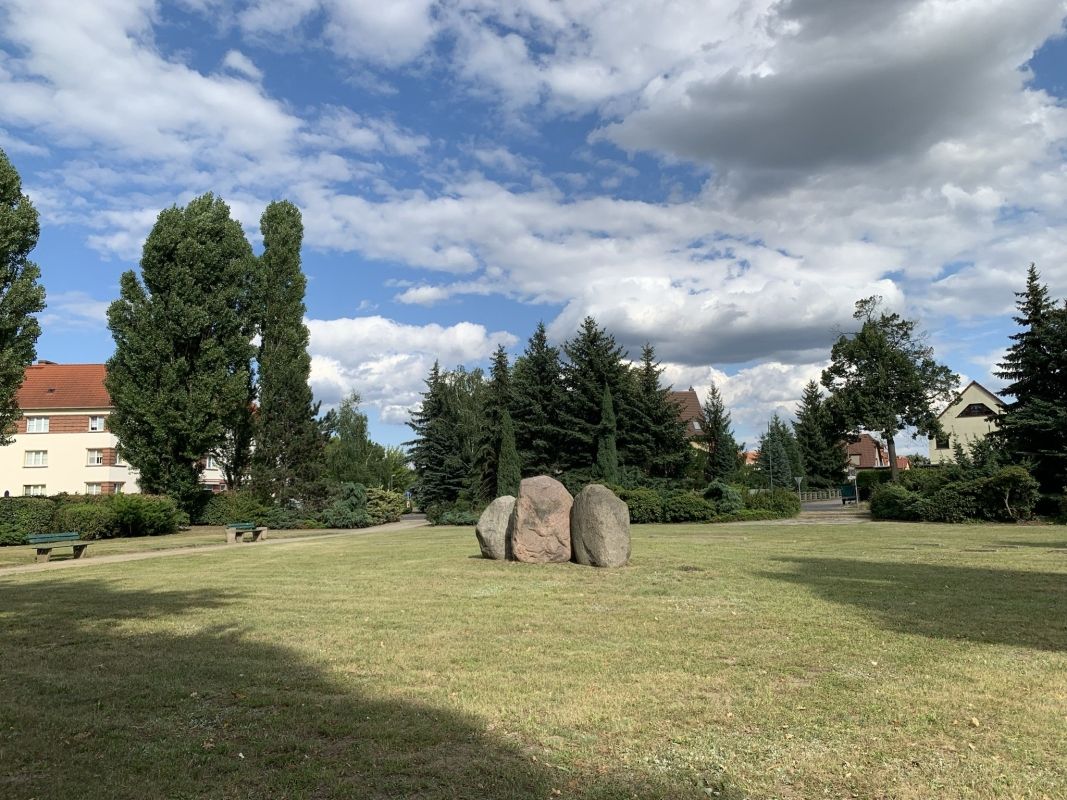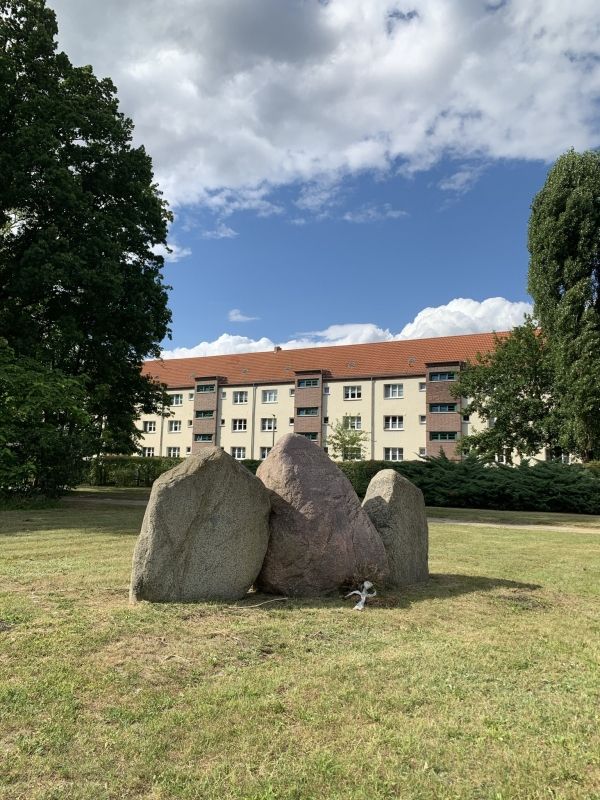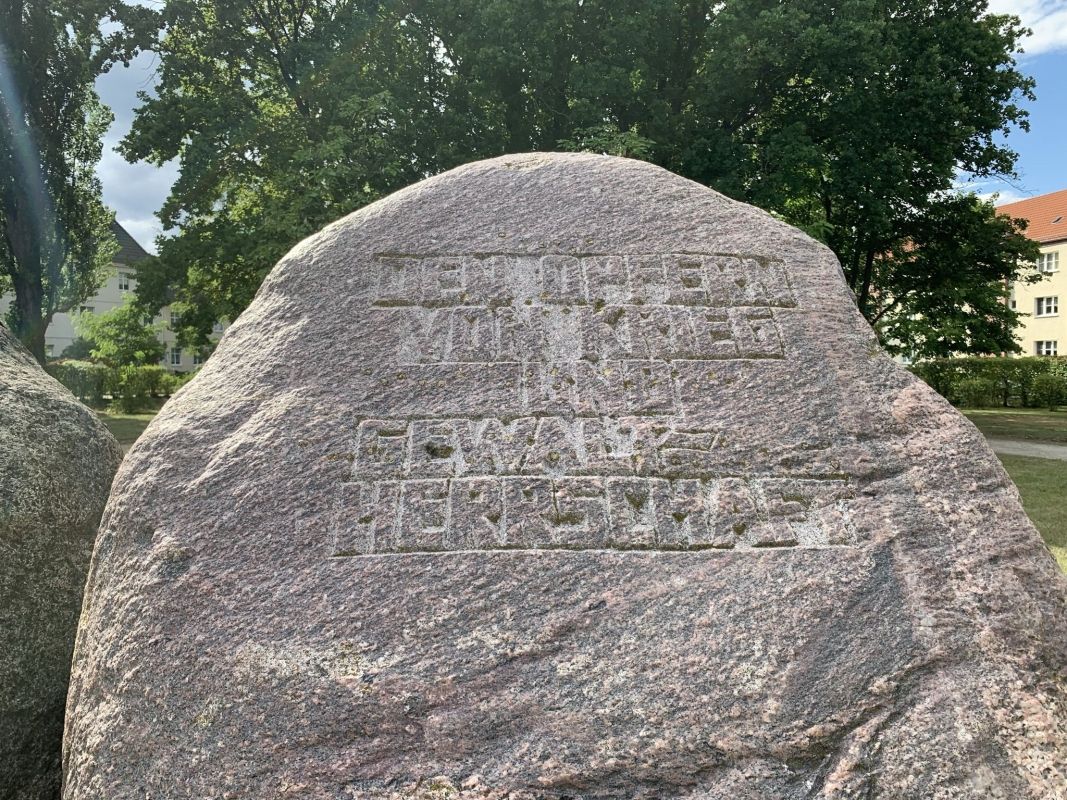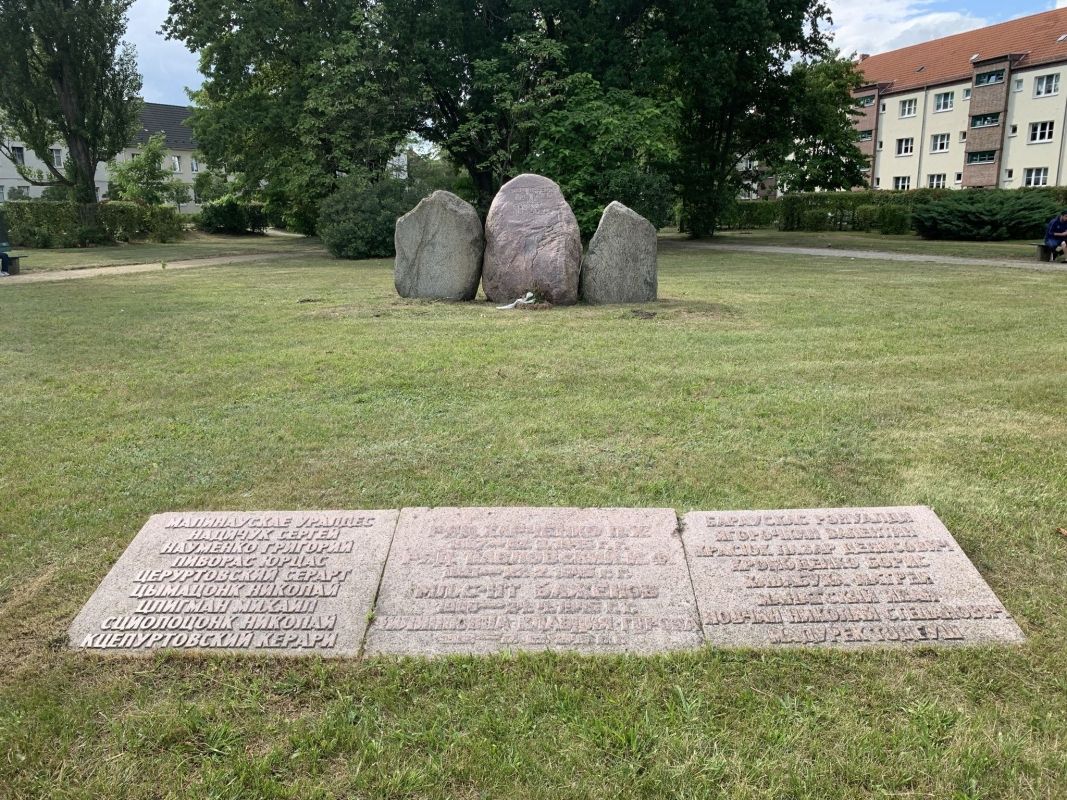
Memorial Square with the Soviet Honorary Cemetery and a memorial to the victims of the Kapp-Lüttwitz coup
Tourist attractions

Description
The Memorial Square is a triangular green area with geometrically arranged paths, lawns, tall poplars, and hedges, not far from the city center of Guben. In the middle of the central lawn, three vertical erratic boulders were placed in a row - on the middle, and at the same time the largest of them, was engraved a following inscription: "VICTIMS OF WAR AND THE REGIME (Ger.: DEN OPFERN VON KRIEG UND GEWALTHERRSCHAFT)". On the lawn in front of it there are three larger and twelve smaller tombstones of red rochlitz porphyry, engraved in Cyrillic with the names of fallen Soviet soldiers. From the side of Karl-Liebknecht-Str. a rectangular commemorative stone of red porphyry was set up, engraved with a soviet star, a date 1941-1945 and the text in Russian and German: "For the eternal memory of the fallen heroes in the fight for freedom and independence in our homeland" (Ger.: "Zum ewigen Gedenken der gefallenen Helden im Kampf für Freiheit und Unabhängigkeit unserer Heimat”). Right next to it is another rectangular red porphyry memorial stone in memory of Otto Thiele and Franz Blümke, victims of the Kapp-Lüttwitz coup; the dates of birth and death of both victims are engraved below.
Historical background
The "Westringplatz", now "Memorial Square" (Ger.: "Platz des Gedenkens"), was founded around 1925 by order of GeWoBa, the first housing estate in Guben, founded in 1895. August 24, 1930 the name was changed to "Friedrich-Ebert-Platz", during which the monument in honor of the deceased last chancellor of the German Empire and the first president of the Reich was unveiled. Only three years later, the Nazis demolished the monument and the complex was renamed "Tannenbergplatz. In 1948, after the Soviet Union took over the eastern part of Germany, the name of the memorial site was changed again, this time to "Liberation Square" (German: "Platz der Befreiung)", opening the Soviet Honorary Cemetery. In total, 41 fallen Red Army soldiers were buried here, and in their memory a large erratic boulder was placed, replaced in 1971 by the T34 tank. Three years later it was enlarged with tombstones with the remains of Soviet forced laborers working in the now defunct Guben plant BORSIG. The graves of Otto Thiele (1881-1920) and Franz Blümke (1898-1920), i.e. victims of the Kapp-Lüttewiz coup of 1920, were exhumed in the Eastern cemetery (Ger. " Ostfriedhof") in the already Polish Gubin and moved to the "Liberation Square". In 1900, by a resolution of the city council, the building was given the present name "Memorial Square" (German "Platz des Gedenken"), removing the tank at the same time. In its place, three erratic boulders were erected in memory of the victims of the war and the regime.
Crossroads Karl-Marx-Str. / Karl-Liebknecht-Str. / Friedrich-Engels-Str. / Kaltenborner Str.
03172 Guben, Germany
Memorial Square with the Soviet Honorary Cemetery and a memorial to the victims of the Kapp-Lüttwitz coup
- Westringplatz: 1925
- Renamed to Friedrich-Ebert-Platz: 08.24.1930
- Liberation Square: 15.05.1948, redesigned in 1971-1974
- Memorial Square: 1990
- Erratic boulders
- Height: approx. 1.50 m - 1.80 m,
- Diameter approx. 40 - 70 cm,
- Material: stone
- Red tombstones
- square about 0,4 x 0,4 m
- Material: Rochlitzer Porphyry
Open 24/7



